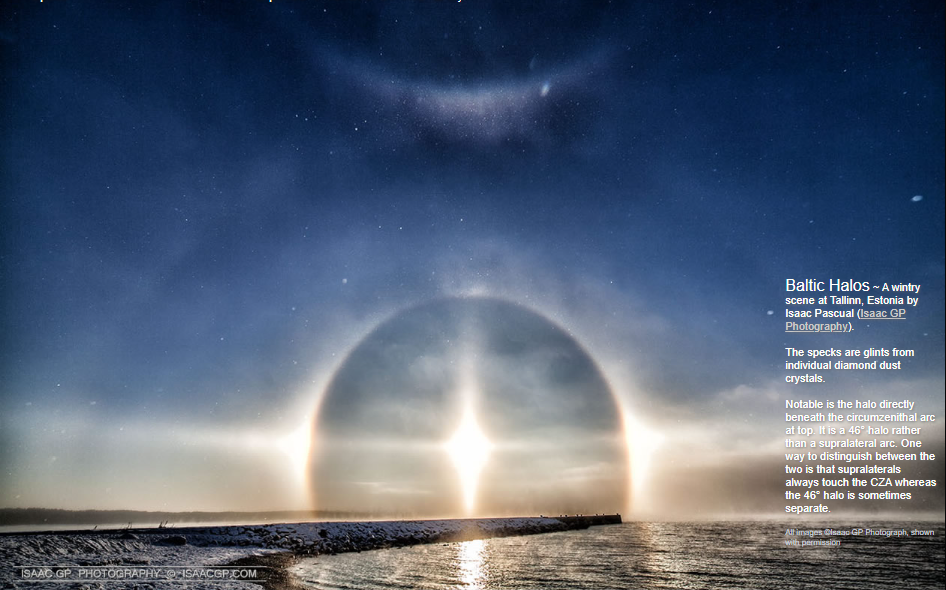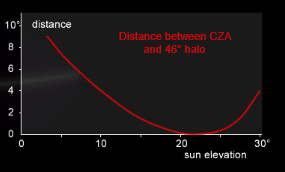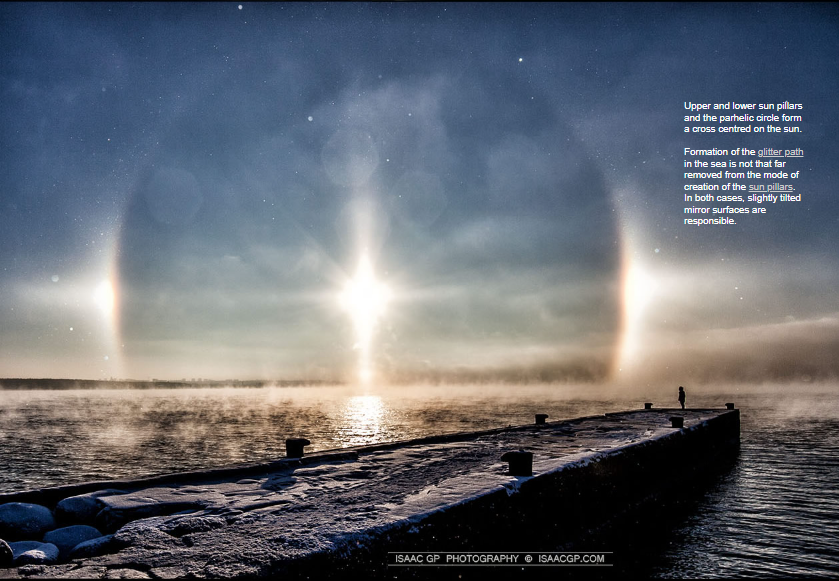Baltic Halos - OPOD
Baltic Halos - A Captivating Wintry Phenomenon
Baltic Halos are a mesmerizing atmospheric optics phenomenon that can be observed in wintry scenes, such as the one captured in Tallinn, Estonia by Isaac Pascual of Isaac GP Photography. These halos are created by individual diamond dust crystals, which produce glints of light that add a magical touch to the winter landscape.
One distinctive feature of Baltic Halos is the halo directly beneath the circumzenithal arc at the top. Unlike the supralateral arc, this halo is known as a 46° halo and can sometimes appear separate from the circumzenithal arc. To differentiate between the two, one can observe whether the supralateral arc touches the circumzenithal arc, whereas the 46° halo may remain distinct.
It is worth noting that distinguishing between supralateral arcs and the 46° halo can be challenging at certain sun heights, specifically between 15 and 27°. In such cases, one can examine whether the outer halo forms a cusp where it intersects with the parhelic circle. The absence of a cusp indicates a 46° halo, while a bright outer arc and a weak 22° halo suggest a supralateral arc. Additionally, the intensity of the upper tangent arc can serve as an indicator, as a weak upper tangent arc implies an insufficient number of column crystals to generate a supralateral arc.
The captivating images of Baltic Halos showcased by Isaac GP Photography provide a glimpse into the intricate beauty of these atmospheric phenomena. However, it is important to remember that these images may not fully convey the awe-inspiring nature of observing Baltic Halos in person. The shimmering effect created by the glints of light from diamond dust crystals is truly a sight to behold.
Apart from Baltic Halos, other fascinating atmospheric optical phenomena can also be witnessed in wintry landscapes. For instance, the formation of sun pillars and the parhelic circle creates a cross-shaped pattern centered around the sun. These phenomena occur due to slightly tilted mirror surfaces that reflect sunlight, resulting in the formation of glitter paths in the sea and the creation of sun pillars.
In conclusion, Baltic Halos are a captivating wintry phenomenon that adds an enchanting touch to snowy landscapes. These halos, formed by individual diamond dust crystals, create glints of light that add a magical sparkle to the surroundings. Distinguishing between the 46° halo and the supralateral arc can be challenging, but careful observation of the interaction with other halo features can provide valuable clues. When witnessed firsthand, the beauty of Baltic Halos is truly a mesmerizing experience that leaves observers in awe of the wonders of the atmosphere.

Baltic Halos ~ A wintry scene at Tallinn, Estonia by Isaac Pascual (Isaac GP Photography).
The specks are glints from individual diamond dust crystals.
Notable is the halo directly beneath the circumzenithal arc at top. It is a 46° halo rather than a supralateral arc. One way to distinguish between the two is that supralaterals always touch the CZA whereas the 46° halo is sometimes separate.
All images ©Isaac GP Photograph, shown with permission

Supralateral arcs and the 46° halo cannot always be distinguished by a separation from the CZA. The distance is too small at sun heights between 15 and 27°. Look whether the outer halo has a cusp where it crosses the parhelic circle. No cusp = 46° halo. Look at the intensity of the upper tangent arc – a weak UTA hints at insufficient column crystals to generate a supralateral. Conversely, a bright outer arc and weak 22° halo says supralateral. More signs here.


Upper and lower sun pillars and the parhelic circle form a cross centred on the sun.
Formation of the glitter path in the sea is not that far removed from the mode of creation of the sun pillars. In both cases, slightly tilted mirror surfaces are responsible.
Note: this article has been automatically converted from the old site and may not appear as intended. You can find the original article here.
Reference Atmospheric Optics
If you use any of the definitions, information, or data presented on Atmospheric Optics, please copy the link or reference below to properly credit us as the reference source. Thank you!
-
<a href="https://atoptics.co.uk/blog/baltic-halos-opod/">Baltic Halos - OPOD</a>
-
"Baltic Halos - OPOD". Atmospheric Optics. Accessed on November 26, 2024. https://atoptics.co.uk/blog/baltic-halos-opod/.
-
"Baltic Halos - OPOD". Atmospheric Optics, https://atoptics.co.uk/blog/baltic-halos-opod/. Accessed 26 November, 2024
-
Baltic Halos - OPOD. Atmospheric Optics. Retrieved from https://atoptics.co.uk/blog/baltic-halos-opod/.